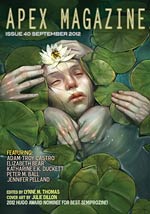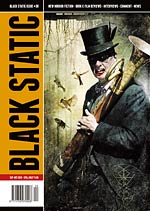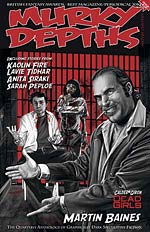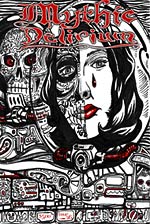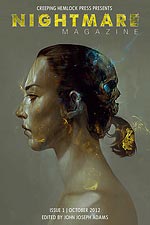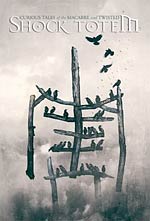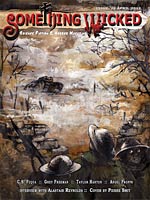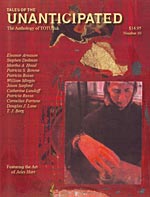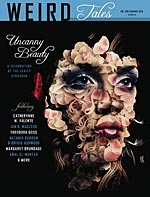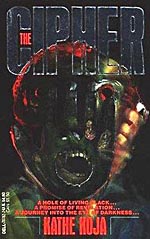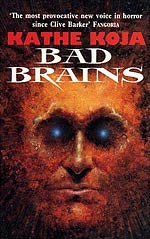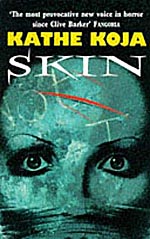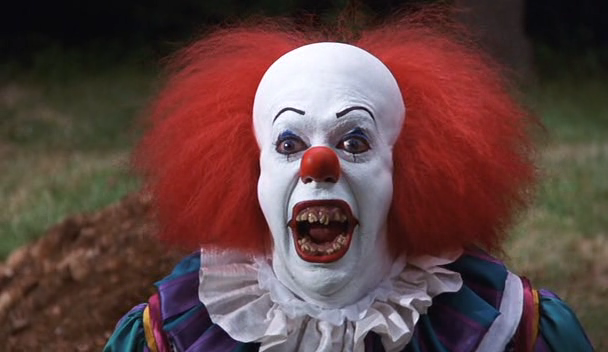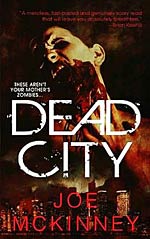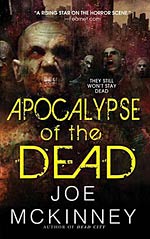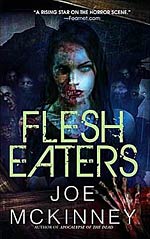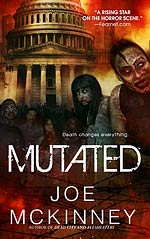Horror Magazines
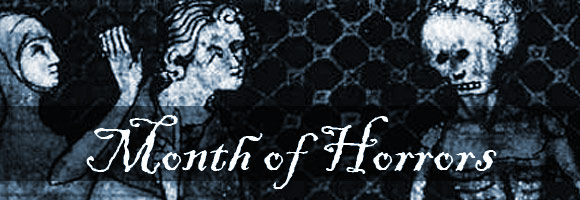
I’ve been hearing for years that genre magazines are going the way of the Dodo. From where I’m standing, it looks like a pretty healthy market. On our Magazines page we have listed over 70 genre magazines for you to choose from and we keep finding more new ones to add all the time.
For our Month of Horrors I wanted to point out some of the Horror magazines from out list. If you’re looking for something creepy and scary these magazines will get the job done. Check ’em out and if you find something you like show your support by subscribing!
Apex Magazine
Apex Publications started as a tingle in the mind of Jason Sizemore during the month of November in the year 2004. Having been a fan of the small press scene for several years, he noticed a lack of a certain type of fiction: Science-Horror.
Black Static
Black Static is a horror magazine that has earned much praise for its style, bravery, editorial and fiction content. Its stories are innovative and daring, never afraid to shock or disturb yet never forget to entertain.
Murky Depths
Murky Depths is a quarterly anthology with a difference. It features top quality speculative fiction with sprinklings of horror and fantasy that push the boundaries of science fiction. Each story is complimented with its own unique artwork.
Mythic Delirium
Mythic Delirium is a biannual journal that publishes science fiction, fantasy, horror, surreal and cross-genre poetry.
Nightmare Magazine
Nightmare is an online horror and dark fantasy magazine. In Nightmare’s pages, you will find all kinds of horror fiction, from zombie stories and haunted house tales, to visceral psychological horror. No subject is off-limits, and we will be encouraging our writers to take chances with their fiction and push the envelope.
Nightmare is brand new on the market – their first issue was released October 1st.
Shock Totem
Shock Totem is a bi-annual dark fantasy and horror publication. Our first issue was published in July of 2009. We focus on the one thing that matters most: the story. Back to basics. Each issue features fiction that we, as readers, enjoy. Within our pages, new and established authors are equals.
Something Wicked
Something Wicked is a monthly online and electronic-download science fiction and horror magazine. Published monthly, we feature some of the best new voices in horror and science fiction from around the world.
Tales of the Unanticipated
Tales of the Unanticipated is a journal of speculative fiction, fantasy, horror, and stories that you just wouldn’t anticipate. Tales of the Unanticipated is currently published annually.
Weird Tales
Weird Tales was launched to showcase writers trying to publish stories so bizarre and far out, no one else would publish them — stories of unearthly dimensions and dark possibilities, gothic seductresses and cosmic monstrosities.
The Horror! The Horror! – Kathe Koja
Guest Blogger and WWEnd Member, Charles Dee Mitchell, has contributed a great many book reviews to WWEnd including his extensive Philip K. Dickathon blog series. In this series Dee explores the darker side of genre fiction and it’s practitioners. Be sure to visit his blog www.potatoweather.blogspot.com for more genre goodness.
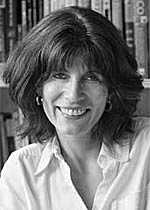 If I found a hole into another dimension in the utility closet of my dingy apartment building, I like to think I would contact either MIT or the Institute of Advanced Studies at Princeton. On the other hand, if I was either of the characters from Kathe Koja‘s The Cipher (1991), no, I would keep the discovery as the special plaything for myself and my really pretty awful girlfriend. Then all sorts of horrible and unfortunate things could happen, one of the worst being the appearance of a similar hole in the palm of my hand.
If I found a hole into another dimension in the utility closet of my dingy apartment building, I like to think I would contact either MIT or the Institute of Advanced Studies at Princeton. On the other hand, if I was either of the characters from Kathe Koja‘s The Cipher (1991), no, I would keep the discovery as the special plaything for myself and my really pretty awful girlfriend. Then all sorts of horrible and unfortunate things could happen, one of the worst being the appearance of a similar hole in the palm of my hand.
This is the set up for Kathe Koja’s debut novel The Cipher, one of the three horror novels she wrote in the early 1990’s before turning to YA fiction. I haven’t read the YA novels, but given the content of the three horror novels I have read, she had to make a serious turn to produce YA material. But the switch could do her good, possibly trimming some of the lugubrious fat from the prose of these earlier works. The Cipher, Bad Brains (1992), and Skin (1993) are overripe with grungy, sex-drenched prose, but they work. This is horror that infests a social setting where young people are making bad decisions that push their curiosity for all things dark and weird toward grotesque and tragic consequences.
Koja needs very little of the supernatural for her horror tales. The Cipher concerns what must be a scientific phenomenon that none of the wastrel art students who are dragged into the tale see any need to investigate beyond the fact that it is way cool and weird. In Bad Brains the hero suffers a blow to the head that leaves him with frontal lobe seizures and visions of a malevolent mass of the color silver. I knew that was going to sound ridiculous when I wrote it, but this mass of silver, which any reader is going to write off as a residual hallucination left over from the accident, is really bad news. Running around the country, drunk and stoned and hanging out with strippers, is probably not the best way to deal with it. When the story moves to the derelict home of a brujo in Michigan, the tragedy could be either purely psychological or the result of occult forces. And there is other weirdness that beggars logical explanation. The hero here is an artist, as are most of Koja’s characters. As he travels the northern Midwest, he gets reports from his dealer back home that the paintings he left in his charge are suddenly selling, but their new owners complain that the images begin to change after they get them on the wall.
Skin is Koja’s best novel and the one with the fewest traditional horror trappings. Koja never states a locale for her stories, but she is from Detroit, and a rundown Motorcity, with brutal winters and sweltering summers, seems a likely choice. Everyone is an artist of some sort. I don’t know anything about what the Detroit art scene might have been like in 1990, but none of her artists make anything that seems like it would be taken seriously as art. There is lots of fantasy painting and metal sculpture. But Skin brings in the world of transgressive performance that was an important presence at that time. Koja even credits Survival Research Laboratories and books published by ReSearch in her forward to this novel. Skin is a tale of young people pushing their bodies to ever greater extremes, staging illegal performances with battling machines, real blood, and moments of masochistic ecstasy. Unfortunately, people also die. Koja is not an outsider judging this scene. She chronicles her central character’s slide into madness with unflinching objectivity. The young artists in The Cipher play naively with forces they do not understand and bad things happen. In Skin the artists pursue a vision they will not relinquish even if it destroys them.
Koja’s horror novels are now out of print, but they did not go unnoticed when they first appeared. The Cipher was nominated for the Philip K. Dick Award and Skin was nominated for the World Fantasy Award. Her latest novel, Under the Poppy, is a sexy story set in a 19th century Belgian brothel. Reviews are good, it has won a couple of awards, and it is being adapted for the stage.
Click the book covers to read my reviews of the individual Koja novels.
20th Century Ghosts, by Joe Hill
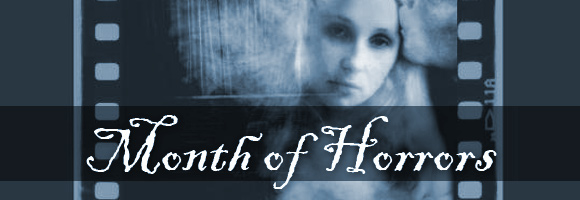
Joe Hill is, I think, a much better writer and storyteller than his father, Stephen King. While I enjoyed his novel Heart-Shaped Box, his earlier collection of short stories has a special kind of charm. Like any volume of short stories, 20th Century Ghosts has its hits and its misses, but even the imperfect tales are far more interesting than you would have any reason to expect. The book was published a few years before Hill was “outed” as Stephen King’s son, and while it’s not entirely fair to compare any artist to his close relations, it’s quite impossible to avoid. But as I said, I believe Hill comes out as the winner in the comparison. I have yet to read his second novel Horns, but I have little doubt it will be worthwhile.
Not every story found within is a horrific or even a darkly fantastic story, and according to Christopher Golden’s introduction some of them were written for literary magazines (a term Golden somehow finds despicable). But if the horror tales are not overly concerned with terror and fright to the exclusion of literary art, the literary tales have plenty of horror of their own.
The Shirley Jackson Award
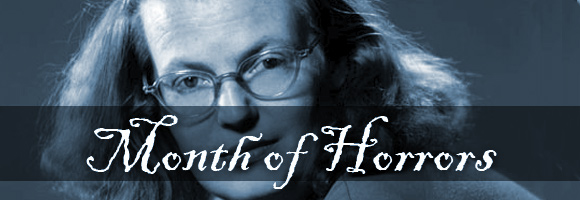
Just in time to kick of the Month of Horrors, we have added the Shirley Jackson Award to our awards list! We’re always on the lookout for ways to expand our book collection, and since Horror is the most recent genre addition to the site, our selection for it has been on the sparse side. Here’s how the Award runners describe themselves:
In recognition of the legacy of Shirley Jackson’s writing, and with permission of the author’s estate, the Shirley Jackson Awards have been established for outstanding achievement in the literature of psychological suspense, horror, and the dark fantastic.
Shirley Jackson (1916-1965) wrote such classic novels as The Haunting of Hill House and We Have Always Lived in the Castle, as well as one of the most famous short stories in the English language, “The Lottery.” Her work continues to be a major influence on writers of every kind of fiction, from the most traditional genre offerings to the most innovative literary work. National Book Critics Circle Award-winning novelist Jonathan Lethem has called Jackson “one of this century’s most luminous and strange American writers,” and multiple generations of authors would agree.
Go take a look at their site, and of course at our new award page.
Month of Horrors 2012
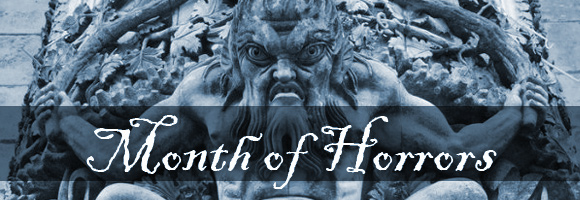
“I am forced into speech because men of science have refused to follow my advice without knowing why.”
–H.P. Lovecraft
There is something primal about fear. Primal in the sense of evoking a kind of bodily lurch in what is animal in ourselves, as primal as lust and wonder, and in that sense almost amoral. While the Science Fiction genre is tied to the mundane world as it is or as we think it likely to become, and Fantasy is tied to the world as we would like to imagine it to be, Horror is the only one of the three that goes for the gut. In fact, it is one of a few genres that have as their main purpose to inflame a certain emotion. Romance incites lust, Comic fiction incites hilarity, and Horror incites fear. That someone would intentionally seek out literature that incites lust or hilarity is not difficult to understand, but why fear? What do people get out of empathizing with the helpless teenager who is being stalked by a serial killer, or with the man contemplating the starry sky after learning that what he thought to be endless beauty was in fact an endlessly dark terror?
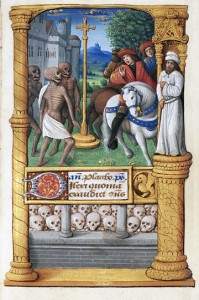 It is this element of empathy with the frightened protagonist that I think distinguishes the modern Horror tale from pre-modern tales of ghosts, monsters, and the undead. Earlier stories like that of the Three Living and Three Dead were morality tales meant to engender a holy fear unto repentance—a far cry from The Walking Dead. Fairy tales were sometimes written to scare little children, but not adults. Pagan myths about monsters read almost more like curiosities than exercises in fright. Science Fiction and Fantasy are both more intellectual: one playing with the rules of the world as it is, the other wondering what it would be like if the rules were otherwise. Horror is all about emotion, and if the reader never feels scared while reading something of this genre, it is perceived to be a failure of the form.
It is this element of empathy with the frightened protagonist that I think distinguishes the modern Horror tale from pre-modern tales of ghosts, monsters, and the undead. Earlier stories like that of the Three Living and Three Dead were morality tales meant to engender a holy fear unto repentance—a far cry from The Walking Dead. Fairy tales were sometimes written to scare little children, but not adults. Pagan myths about monsters read almost more like curiosities than exercises in fright. Science Fiction and Fantasy are both more intellectual: one playing with the rules of the world as it is, the other wondering what it would be like if the rules were otherwise. Horror is all about emotion, and if the reader never feels scared while reading something of this genre, it is perceived to be a failure of the form.
So why do we bother with fictional fear? Isn’t the real world scary enough? Well, yes and no. There are many things to be frightened about in the world, perhaps even more so than in earlier, less technological ages, but the world we live in is oddly sanitized. Fears that high-level government and economic leaders are acting together against the common good are dismissed as nutty conspiracy theories. Fears that our loved ones will be hurt by what seem to be the increasingly evil people that populate our societies are contained in the therapist’s office. Fears about the afterlife are shrugged off by socially polite agnosticism. Fears about death are minimized by painkillers, euthanasia, sentimental funerals, and an avoidance of cemeteries. (Have you ever just visited a cemetery for the sake of the experience? People think you’re a goth nut on the hunt for poetic inspiration.) We repress our natural fears, but they cannot be denied forever. Horror novels and films are as socially acceptable a conduit as any for allowing oneself to truly feel fear.
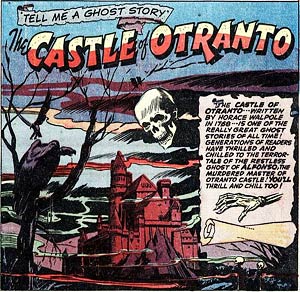 The need for a Horror genre, or something like it, is very Freudian. It serves a psychological need that could perhaps be best sated by living a better kind of life, but which can be bandaged by slasher movies in a tight fix. The best Horror writers understand this need and exploit it without exploiting their readers (unlike Romance writers, who all exploit their readers). I expect we have our fair share of exploitive and “gross-out” Horror fiction on WWEnd, but unfortunately we’re still so ignorant about the genre around here that we honestly couldn’t tell which novel is which.
The need for a Horror genre, or something like it, is very Freudian. It serves a psychological need that could perhaps be best sated by living a better kind of life, but which can be bandaged by slasher movies in a tight fix. The best Horror writers understand this need and exploit it without exploiting their readers (unlike Romance writers, who all exploit their readers). I expect we have our fair share of exploitive and “gross-out” Horror fiction on WWEnd, but unfortunately we’re still so ignorant about the genre around here that we honestly couldn’t tell which novel is which.
The purpose of Month of Horrors is to explore this genre a little more, to feel out its architecture and boundaries. Scott Lazerus did us a great service back in April by exploring the roots of the Gothic sub-genre. Rico will be writing about the origins and influence of Mary Shelley’s Frankenstein as October goes on. I will be reviewing whatever books I can get my hands on and finish before the month is out.
And of course we hope to feature your Horror novel reviews throughout the month, so get busy writing!
Month of Horrors is on Its Way…
…and WWEnd is looking for your book reviews to go with it!
Last year’s Month of Horrors was a huge success, but it was driven almost entirely by Rico and myself (with one great assist by Allie), but this year we’d like to feature reviews of Horror novels and collections from all of our members. All you need to do is start posting reviews to your favorite Horror novels, and we’ll pick the best ones for the blog.
Not sure where to start? Here’s a small sampling of the Horror books and authors currently on the site. And remember, if you can’t find a book in our database that you’d really like to review, drop us a line in the comments, and we’ll do what we can to add it.
Sub-Genres:
Authors:
- William Peter Blatty
- Ramsey Campbell
- Neil Gaiman
- Joe Hill
- Shirley Jackson
- Stephen King
- Dean Koontz
- H.P. Lovecraft
- Arthur Machen
- Peter Straub
Lists and Awards:
The Horror! The Horror! Joe McKinney
Guest Blogger and WWEnd Member, Charles Dee Mitchell, has contributed a great many book reviews to WWEnd including his extensive Philip K. Dickathon blog series. In this series Dee explores the darker side of genre fiction and it’s practitioners. Be sure to visit his blog www.potatoweather.blogspot.com for more genre goodness.
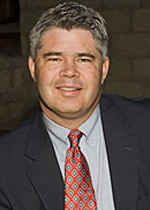 For an author of zombie novels, Joe McKinney has an unbeatable backstory. For the past twenty years or so, he has been a policeman in San Antonio, Texas, serving as a homicide detective, then in the office of emergency preparedness, and now overseeing the 911 division. It’s not that San Antonio has been especially prone to zombie attacks during that time, but cops have seen a lot of the worst parts of human nature. McKinney’s protagonists, who tend to be cops themselves, cannot possibly be prepared for the horrific situations they encounter, but they handle themselves cooly and professionally – at least for as long as such a response is possible. If I found myself in a zombie-infested quagmire, I would want to stay close to one of McKinney’s main characters, unless he proved to be one of the immoral bastards the author also throws into the mix.
For an author of zombie novels, Joe McKinney has an unbeatable backstory. For the past twenty years or so, he has been a policeman in San Antonio, Texas, serving as a homicide detective, then in the office of emergency preparedness, and now overseeing the 911 division. It’s not that San Antonio has been especially prone to zombie attacks during that time, but cops have seen a lot of the worst parts of human nature. McKinney’s protagonists, who tend to be cops themselves, cannot possibly be prepared for the horrific situations they encounter, but they handle themselves cooly and professionally – at least for as long as such a response is possible. If I found myself in a zombie-infested quagmire, I would want to stay close to one of McKinney’s main characters, unless he proved to be one of the immoral bastards the author also throws into the mix.
McKinney’s Dead World series consists of Dead City, Apocalypse of the Damned, and Flesh Eaters. In September, 2012, this trilogy will be joined by Mutated. McKinney’s titles let you know what you are getting. His initial trilogy has an interesting chronology. Dead City (2006) takes place in San Antonio during the night that the infection plaguing a storm-ravaged Houston first makes its way north. There are those inevitable early police reports: “We got a party getting out of hand down on the east side.” Apocalypse (2010) returns to Houston, a month or so after the city has been quarantined. Only if you have never watched a horror movie in your life, you know how well that quarantine is going to hold. The novel follows a band of escapees heading north to a settlement that promises protection for the zombie hordes. Again, unless you have never watched a horror movie in your life, you know how well that is going to work out.
The problem endemic to zombie fiction, on which the floodgates have now officially been opened, is that we have, after all, seen all this before. George Romero created Night of the Living Dead in 1968. To some extent, all zombie films and fiction are a gloss on the Romero original. (I am not counting earlier zombie works that based themselves on Haitian and voodoo motifs.) Something brings the dead back to life. The deadly extraterrestrial rays of forty years ago have been for the most part updated to hemorrhagic viruses. The infection spreads by bites or bodily fluids, victims crave human flesh, and there is no cure. The only real question that each author and filmmaker must decide is whether to create fast or slow zombies. I am in the slow zombie camp myself, but I admire McKinney’s solution. He allows for relative mobility based on the age and health of the victim.
McKinney’s prose has the no-nonsense, laconic rhythm that fits well with his police officer protagonists. The stories are predictable, but the secret here is to make each moment believable and to pace the gross outs with realistic depictions of what it is going to take for each character to live through the next hour. McKinney’s novels were getting noticed by those who give horror writing awards early on, and in 2011 he won a Bram Stocker Award for Flesh Eaters. And that third outing is definitely where he came into his own as a writer. Dead City was just like a zombie movie, except it took five hours to read instead of ninety minutes to watch. Apocalpyse succeeded in opening up the story, but the climax came directly from accounts of the Jonestown Massacre, only with zombies instead of federal agents on hand for the tragic conclusion.
Flesh Eaters goes back to Houston and the series of storms that not only destroy the city but through chemical spills and god knows what else sets in motion the infections that will change life on earth forever. Again, this is a zombie story, and so we know basically what is going to happen. But for the first time, McKinney creates morally complex characters capable of both courage and betrayal in the face of the unthinkable horrors they confront.
I am not going to become a fan of zombie fiction. The only other example I have read was the well-received novel Feed by Mira Grant and I absolutely hated it. But come September, I feel certain that I will be searching out McKinney’s latest, even though with the title Mutated I am pretty damn sure I now at least three fourths of what is going to happen.
You can read my reviews of Dead City, Apocalypse of the Damned, Flesh Eaters and Feed right here on Worlds Without End.
The Horror! The Horror! – Tom Piccirilli
Guest Blogger and WWEnd Member, Charles Dee Mitchell, has contributed a great many book reviews to WWEnd including his extensive Philip K. Dickathon blog series. In this series Dee explores the darker side of genre fiction and it’s practitioners. Be sure to visit his blog www.potatoweather.blogspot.com for more genre goodness.
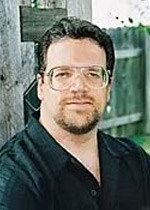 The less Tom Piccirilli encumbers his novels with plot, the better they are. At least that has been the case in his five early horror novels I have read: Hexes (1999), The Deceased (2000), The Night Class (2001), A Choir of Ill Children (2004) and, Headstone City (2006). The novels are by no means short of grotesque and often unpleasant incidents. But Piccirilli works by accumulation not by character arcs and interwoven themes. His theme is consistently that of a young man, in his late twenties or thirties, who must come to accept his role in society, whether it is the gangland of Brooklyn or a backwater town somewhere in the American South. But the novels are not traditional bildungsromans. This is not in the world of David Copperfield or Wilhelm Meister’s Apprenticeship. These are nightmares.
The less Tom Piccirilli encumbers his novels with plot, the better they are. At least that has been the case in his five early horror novels I have read: Hexes (1999), The Deceased (2000), The Night Class (2001), A Choir of Ill Children (2004) and, Headstone City (2006). The novels are by no means short of grotesque and often unpleasant incidents. But Piccirilli works by accumulation not by character arcs and interwoven themes. His theme is consistently that of a young man, in his late twenties or thirties, who must come to accept his role in society, whether it is the gangland of Brooklyn or a backwater town somewhere in the American South. But the novels are not traditional bildungsromans. This is not in the world of David Copperfield or Wilhelm Meister’s Apprenticeship. These are nightmares.
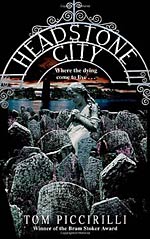 Demonic evil, ghosts, astral projections, some handy knowledge of witchcraft, and alternate realities are daily issues for Piccirilli’s protagonists. In Headstone City, Johnny Danetello endures frequent visitations from the dead, ranging from the girl he could not save from an overdose to his mother to "the boy with the damaged head." Caleb Prentiss, an alcoholic upperclassman at a small, snowbound Midwestern university, wants to find out more about the girl murdered in his dorm room over winter break. He is often accompanied by his sister who committed suicide; and, when he receives the unasked-for blessing of the stigmata in both palms, he leaves bloody paths across the snowy campus. Thomas, the central character of A Choir of Ill Children has too many issues to go into here, but one involves the care of his brothers, triplets conjoined at the frontal lobe.
Demonic evil, ghosts, astral projections, some handy knowledge of witchcraft, and alternate realities are daily issues for Piccirilli’s protagonists. In Headstone City, Johnny Danetello endures frequent visitations from the dead, ranging from the girl he could not save from an overdose to his mother to "the boy with the damaged head." Caleb Prentiss, an alcoholic upperclassman at a small, snowbound Midwestern university, wants to find out more about the girl murdered in his dorm room over winter break. He is often accompanied by his sister who committed suicide; and, when he receives the unasked-for blessing of the stigmata in both palms, he leaves bloody paths across the snowy campus. Thomas, the central character of A Choir of Ill Children has too many issues to go into here, but one involves the care of his brothers, triplets conjoined at the frontal lobe.
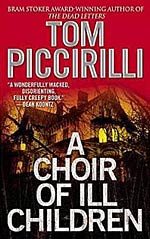 Piccirilli’s locales are sharply observed locations that could exist nowhere but in his novels. In addition to the snowbound campus in The Night Class and the swampy town of Kingdom Come in A Choir of Ill Children, Piccirilli delineates in Hexes the town of Summerfel – Summerfell! – a small town dominated by an asylum named Panecraft, a lighthouse undermined by tunnels containing some unspeakable horror, a local hangout called Krunch Burger, and a rich man’s house that is more like a castle than a mansion. If you don’t like things in Summerfel, you can always move the next town over to Gallows. Headstone City takes place in an imaginary neighborhood of an otherwise identifiable Brooklyn, a neighborhood where the decaying mansions of stars from the earliest days of silent film surround the enormous cemetery of the title. The neighborhood is still run by some goonish gangsters who have mostly moved their money into legit businesses but who still, guided by a misplaced enthusiasm for their once glorious past, enact the occasional bloody vendetta against one another.
Piccirilli’s locales are sharply observed locations that could exist nowhere but in his novels. In addition to the snowbound campus in The Night Class and the swampy town of Kingdom Come in A Choir of Ill Children, Piccirilli delineates in Hexes the town of Summerfel – Summerfell! – a small town dominated by an asylum named Panecraft, a lighthouse undermined by tunnels containing some unspeakable horror, a local hangout called Krunch Burger, and a rich man’s house that is more like a castle than a mansion. If you don’t like things in Summerfel, you can always move the next town over to Gallows. Headstone City takes place in an imaginary neighborhood of an otherwise identifiable Brooklyn, a neighborhood where the decaying mansions of stars from the earliest days of silent film surround the enormous cemetery of the title. The neighborhood is still run by some goonish gangsters who have mostly moved their money into legit businesses but who still, guided by a misplaced enthusiasm for their once glorious past, enact the occasional bloody vendetta against one another.
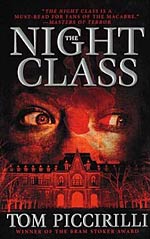 Several internet customer reviews complain that these books make no sense, but I think those readers are looking for the wrong things. Like a coherent plot. Piccirilli is a lot of fun to read. There is always that central character who knows a bit more than those around him; whether it is more effective magical spells or just that so much of what is going on is bullshit. When Piccirilli brings more plotting into the mix, things tend to go wrong. The Deceased turns into little more that a pretty good horror movie, with girls, who I assume have large breasts, running around an old house during a thunderstorm. The gangster story that runs through Headstone City is not as resolved or effective as the weirdness that underlies it.
Several internet customer reviews complain that these books make no sense, but I think those readers are looking for the wrong things. Like a coherent plot. Piccirilli is a lot of fun to read. There is always that central character who knows a bit more than those around him; whether it is more effective magical spells or just that so much of what is going on is bullshit. When Piccirilli brings more plotting into the mix, things tend to go wrong. The Deceased turns into little more that a pretty good horror movie, with girls, who I assume have large breasts, running around an old house during a thunderstorm. The gangster story that runs through Headstone City is not as resolved or effective as the weirdness that underlies it.
But these books are just the kind of fun I hoped modern horror novels could offer. They are literate, amusing, at times really icky, and never slow down. I understand that Piccirilli’s recent novels are more straightforward crime stories, so I hope he has worked out those plotting issues. On the off chance that anyone reading this might actually pick up a Piccirilli novel, I recommend starting with the best, A Choir of Ill Children. If nothing else, you will learn a really interesting new use of the word "vinegar."
The Horror! The Horror! – Ramsey Campbell
Guest Blogger and WWEnd Member, Charles Dee Mitchell, has contributed a great many book reviews to WWEnd including his extensive Philip K. Dickathon blog series. This is a new series where Dee explores the darker side of genre fiction and it’s practitioners. Be sure to visit his blog www.potatoweather.blogspot.com for more genre goodness.
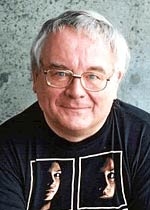 Ramsey Campbell‘s home page opens with a quote from the Oxford Companion to English Literature. It informs us that Campbell is "Britain’s most respected living horror writer."
Ramsey Campbell‘s home page opens with a quote from the Oxford Companion to English Literature. It informs us that Campbell is "Britain’s most respected living horror writer."
My copy of the OCEL is a fifth edition and has no entry for Campbell at all. If it did, that first statement might be followed by this bit of information: Charles Dee Mitchell has attempted to read five of Mr. Campbell’s works and only succeeded in finishing three. And trust me, in the case of those I abandoned it was not because I was too terrified to turn another page.
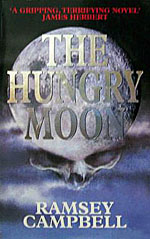 Ramsey Campbell may neither travel well nor date well. He has an American following but is a much bigger deal, obviously, in Great Britain. He is, after all, their most respected living horror writer. He has been publishing since the late 1950’s, and his most recent novel came out just this year from one of the presses that do high-priced, short runs of fantasy, horror, and science fiction titles. The books I tried were early to mid career novels. The Doll Who Ate His Mother (1976), The Face that Must Die (1979), The Nameless (1981), The Hungry Moon (1986), and The Influence (1988). Perhaps the past two decades have seen a remarkable transformation of his style and storytelling, but it is not as though the ones I read came un-recommended. The Face That Must Die was a somewhat fancy reprint with an introduction by Poppy Z. Brite and a few really bad illustrations. The Influence won the 1989 British Fantasy Award and is on the Guardian’s list of best sf and fantasy. The Hungry Moon, absolutely the worst of the lot, is the novel chosen by the Horror Writers Association to represent Campbell’s work.
Ramsey Campbell may neither travel well nor date well. He has an American following but is a much bigger deal, obviously, in Great Britain. He is, after all, their most respected living horror writer. He has been publishing since the late 1950’s, and his most recent novel came out just this year from one of the presses that do high-priced, short runs of fantasy, horror, and science fiction titles. The books I tried were early to mid career novels. The Doll Who Ate His Mother (1976), The Face that Must Die (1979), The Nameless (1981), The Hungry Moon (1986), and The Influence (1988). Perhaps the past two decades have seen a remarkable transformation of his style and storytelling, but it is not as though the ones I read came un-recommended. The Face That Must Die was a somewhat fancy reprint with an introduction by Poppy Z. Brite and a few really bad illustrations. The Influence won the 1989 British Fantasy Award and is on the Guardian’s list of best sf and fantasy. The Hungry Moon, absolutely the worst of the lot, is the novel chosen by the Horror Writers Association to represent Campbell’s work.
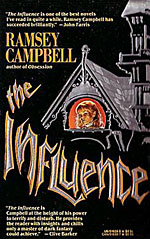 So is it just me? Of course, if that turned out to be the case, I would be the last person to admit it. I found the books mildly entertaining to unreadable. The thought that they might be genuinely frightening or even unnerving never crossed my mind.
So is it just me? Of course, if that turned out to be the case, I would be the last person to admit it. I found the books mildly entertaining to unreadable. The thought that they might be genuinely frightening or even unnerving never crossed my mind.
I’ll start with the ones I didn’t finish. The Hungry Moon is an overlong tale of Druid magic resurrected in the modern day by a religious nut. Campbell introduces us to too many of the residents of Moonwell, a village in Northern England. We learn what supposedly makes each one interesting and that takes a while. Then the event happens and we see how each of them react. Since I started skimming and finally quit the book, I don’t know the full panoply of horrible things that go on. But in the first chapter you learn that the village of Moonwell not only no longer exists but has been removed from maps, memories, and the telephone directory. The Influence concerns an evil great aunt out to possess the soul of her grandniece. If it had been a movie on TV and I could fast forward the commercials I would have watched it. But I couldn’t read it.
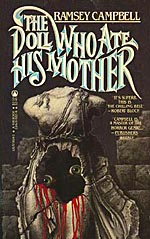 The other three novels are about psychopaths, two of them with some black magic references. The best of them is The Face that Must Die. The anti-hero, a Mr.Horridge, is a deranged young man obsessed with the evils of homosexuality. Great Britain decriminalized homosexuality in 1967, and decade later, Horridge sees the twisted results of the legislation everywhere he turns. He and his hammer will do what they can to remedy this situation. When the book first came out, portions were excised supposedly because they were too shocking. The complete text did not come out until 1982. Now the book just seems like fun. Horridge is crazy, and the block of flats on which he focuses his rage is peopled by characters only one of whom is gay and none of whom have any idea what’s coming. Like some of those old British stage thrillers, this is a shocker that now plays as black comedy.
The other three novels are about psychopaths, two of them with some black magic references. The best of them is The Face that Must Die. The anti-hero, a Mr.Horridge, is a deranged young man obsessed with the evils of homosexuality. Great Britain decriminalized homosexuality in 1967, and decade later, Horridge sees the twisted results of the legislation everywhere he turns. He and his hammer will do what they can to remedy this situation. When the book first came out, portions were excised supposedly because they were too shocking. The complete text did not come out until 1982. Now the book just seems like fun. Horridge is crazy, and the block of flats on which he focuses his rage is peopled by characters only one of whom is gay and none of whom have any idea what’s coming. Like some of those old British stage thrillers, this is a shocker that now plays as black comedy.
Campbell lives in Liverpool, and what he does best it create the down-in-the heel atmosphere and characters of that dismal, at least in his rendering, Northern England city. Everything is rundown, the weather is miserable, the people often not very bright. I especially liked the paranoid, pot-smoking hippie and the scatterbrained artist who lets a psychopath into her flat thinking he is the plumber.
So big deal, Mr. Campbell is not my cup of tea. If anyone, however, finishes The Influence, I am curious to know if anything even vaguely unpredictable happens by the time it is over.
Graphic Stories, Unwrapped!
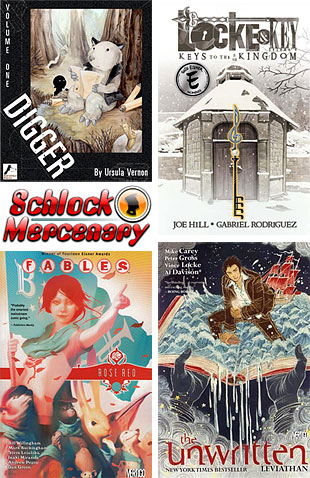 The fifth in our series of Hugo Voting articles (short story, novelette, novella, and related work preceding) is Best Graphic Story. Like Best Novel and Best Related Work, these books are rarely available online for free, but that is not without exception. Although the Hugo committee is likely to make novels, novellas, novelettes and short stories available for free for convention attendees and sponsors (a supporting membership is only $50), we do not believe graphic novels will be included in that reader packet. Consequently, you will need to find some online (two are free) and purchase/borrow/check out others, if you want to read them all.
The fifth in our series of Hugo Voting articles (short story, novelette, novella, and related work preceding) is Best Graphic Story. Like Best Novel and Best Related Work, these books are rarely available online for free, but that is not without exception. Although the Hugo committee is likely to make novels, novellas, novelettes and short stories available for free for convention attendees and sponsors (a supporting membership is only $50), we do not believe graphic novels will be included in that reader packet. Consequently, you will need to find some online (two are free) and purchase/borrow/check out others, if you want to read them all.
-
Digger, by Ursula Vernon is a webcomic, so may be read online for free. If you’d rather own the paper comic, each volume is about ten bucks, give or take, on Amazon.
-
Schlock Mercenary: Force Multiplication is also online for free and begins here. Although dead tree versions of Schlock Mercenary are available, Force Multiplication does not seem to be in print, yet.
-
Locke & Key Volume 4: Keys To The Kingdom, is in print, and the nominated volume 4 may be found at your local comic book shop or on Amazon or in electronic format on Comixology. If you’d like to start from the beginning, get volume 1.
-
Fables Vol 15: Rose Red also does not appear to be available online. Volume 15 is $12, or you could start the whole series in dead tree or Kindle formats. The ebooks are formatted only for the Kindle Fire or Kindle for Android, however.
-
The Unwritten (Volume 4): Leviathan is also available in print and Kindle editions, but volume 4 (the volume that was nominated) is only available in print, so far.
If any more of these volumes become available for free online, we will update this post.
Links to all of the award winning novels are, as always, available through BookTrackr.



















 Full Details
Full Details
